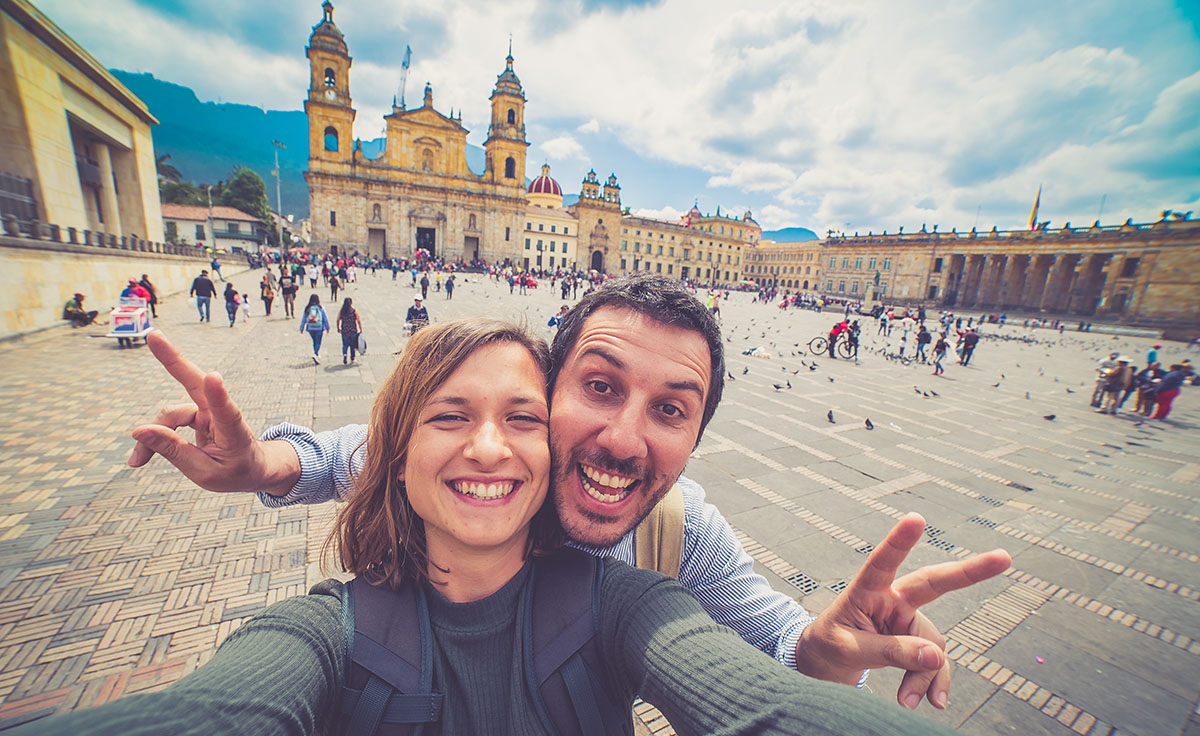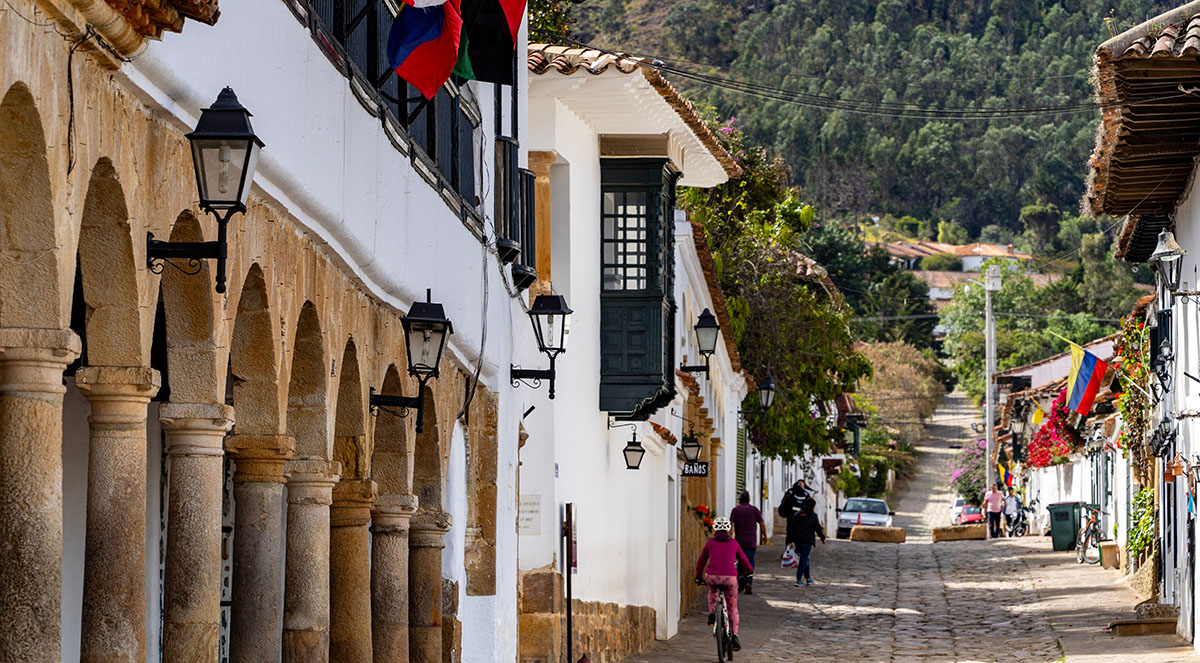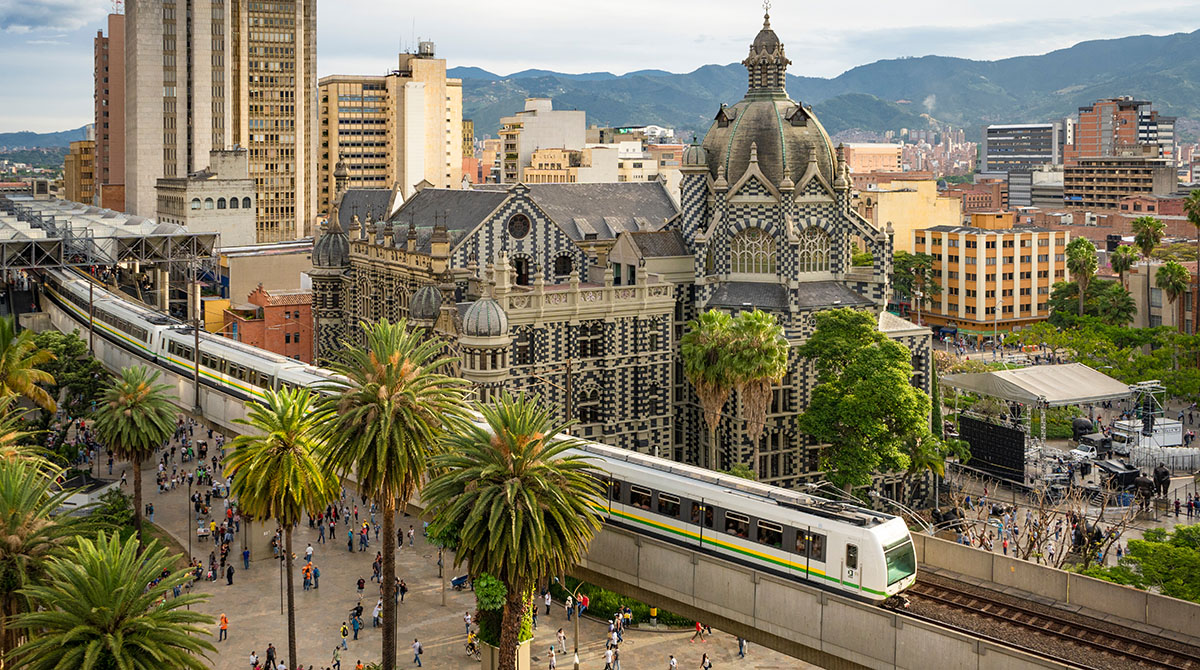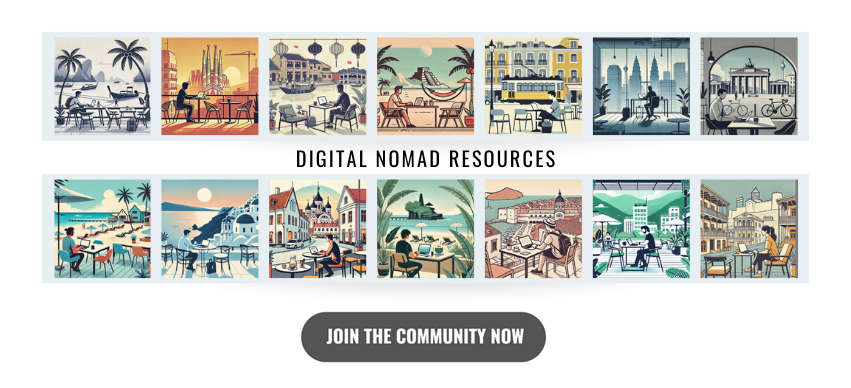Colombia has transformed into one of Latin America’s most vibrant destinations for digital nomads, offering an enticing combination of affordability, biodiversity, warm culture, and improving digital infrastructure. Once overlooked due to safety concerns, Colombia has undergone a remarkable renaissance to become a hub for remote workers seeking diverse experiences from Caribbean coastlines to Andean highlands, all while enjoying a cost of living that stretches further than in many competing nomad destinations.
Colombia’s Digital Nomad Visa Program
In October 2022, Colombia officially launched its Digital Nomad Visa (officially called the Visa de Nómadas Digitales), creating a straightforward pathway for remote workers to legally reside in the country.
Key Details of Colombia’s Digital Nomad Visa:
- Duration: 2 years (significantly longer than many competing programs)
- Income Requirement: Minimum of approximately $650/month (3 times the Colombian minimum wage)
- Application Process: Can be completed entirely online
- Processing Time: Typically 5-15 working days
- Application Fee: Approximately $170
- Work Restrictions: Must work for companies or clients outside of Colombia
- Extensions: Possibility to transition to other visa categories after expiration
- Health Insurance: Proof of international coverage required
- Criminal Background Check: Clean record required
- Official Website: Colombia Digital Nomad Visa
Alternative Visa Options
Before the Digital Nomad Visa, many remote workers used these alternatives (which are still available):
- Tourist Visa: 90 days on arrival for many nationalities, extendable to 180 days per calendar year
- Migrant Visa (M): Various categories including investment, marriage to a Colombian, etc.
- Resident Visa (R): Long-term option after qualifying stays with other visas
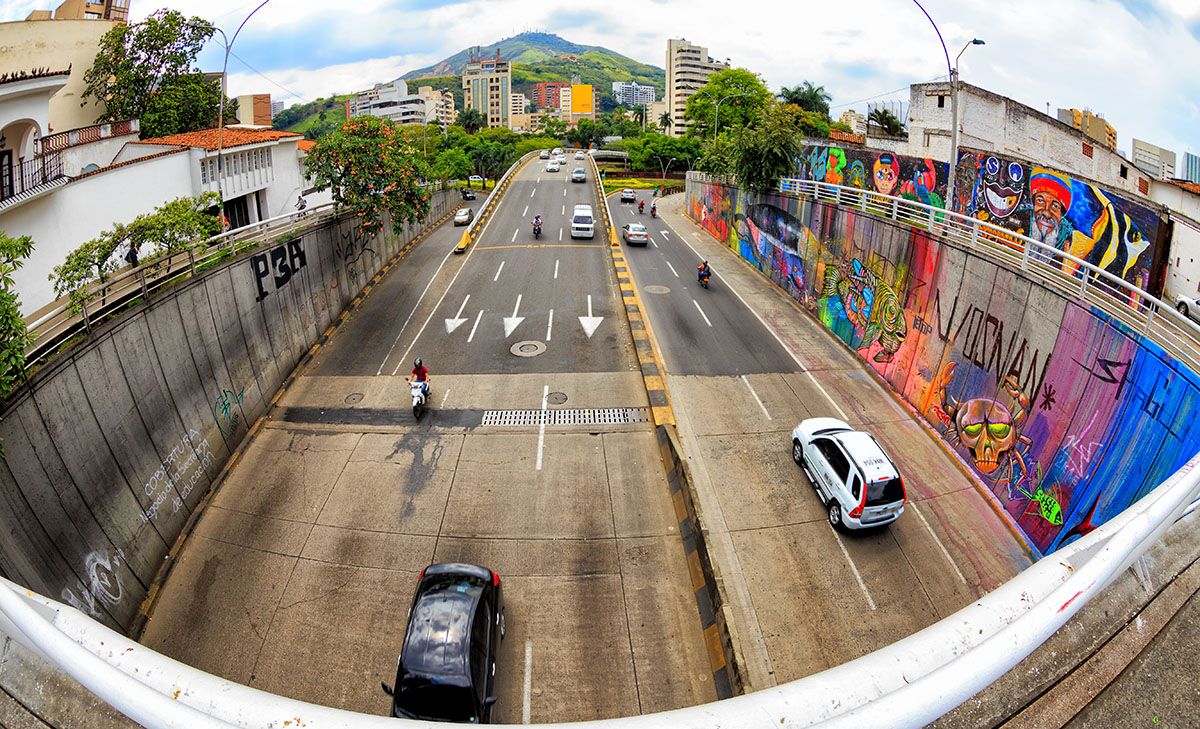
Why Choose Colombia as a Digital Nomad
Colombia offers numerous compelling advantages that have made it increasingly popular among digital professionals:
- Affordability: Exceptional value, with comfortable living from $800-1,500/month
- Geographical Diversity: Caribbean beaches, Andean mountains, Amazon rainforest
- Climate Options: Choose your ideal climate by selecting your altitude
- Connectivity: Rapidly improving internet infrastructure in major cities
- Growing Expat Scene: Established digital nomad communities in multiple cities
- Central Location: Strategic position for exploring South and Central America
- Cultural Richness: Vibrant mix of indigenous, African, and European influences
- Time Zone Advantage: Eastern Time Zone (GMT-5), convenient for North American clients
- Language Opportunity: Immersive environment for learning Spanish
- Welcoming Atmosphere: Colombians are known for their warmth and hospitality
- Coffee Culture: Work from the source of some of the world’s finest coffee
- Medical Tourism: High-quality, affordable healthcare
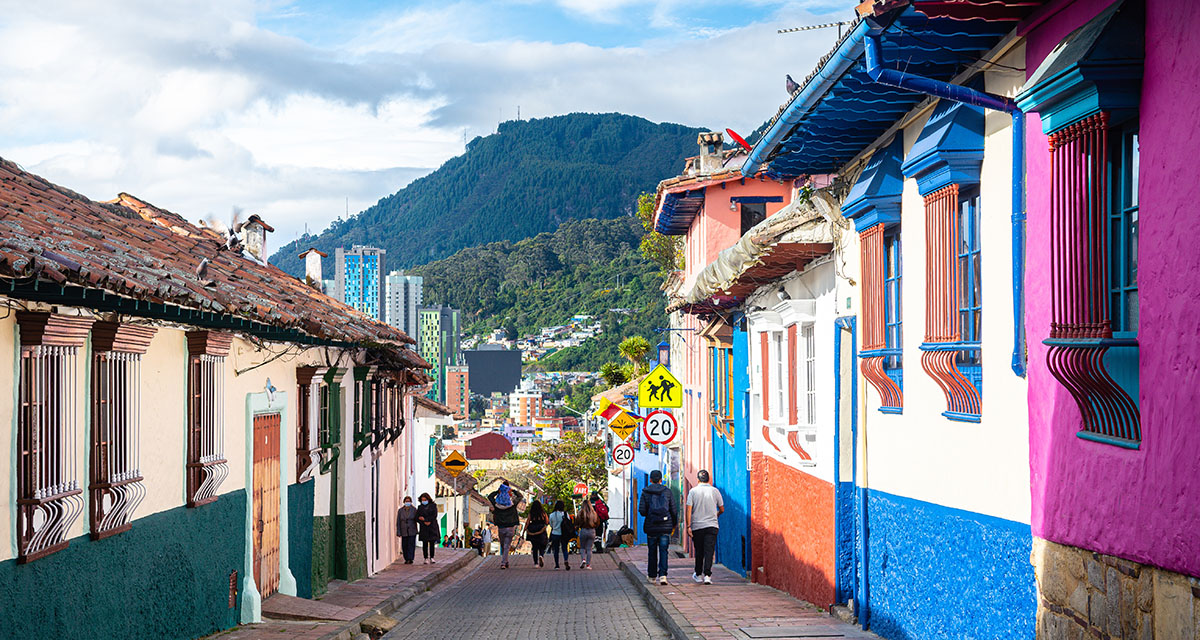
Top Cities for Digital Nomads in Colombia
Medellín: The Digital Nomad Capital
Once notorious for crime, Medellín has reinvented itself as Colombia’s innovation hub:
- Perfect Climate: “City of Eternal Spring” with year-round temperatures of 70-80°F (22-27°C)
- Digital Infrastructure: Best overall connectivity in Colombia
- Nomad Community: Largest concentration of digital professionals in the country
- Modern Transit: Award-winning public transportation including Metro and cable cars
- Coworking Density: Abundant spaces, particularly in El Poblado and Laureles
- Living Costs: Moderate by Colombian standards (~$1,000-1,500/month)
- Safety: Significantly improved, though normal urban precautions apply
- Walkability: Many neighborhoods are pedestrian-friendly
- Lifestyle: Balance of productivity and relaxation
- Language Environment: Growing English presence but primarily Spanish-speaking
- Drawbacks: Air quality issues due to valley location, growing gentrification
Popular digital nomad neighborhoods include El Poblado (upscale, international), Laureles (local vibe, walkable), Envigado (residential, tranquil), and Sabaneta (authentic, emerging).
Bogotá: The Metropolitan Center
Colombia’s capital offers a cosmopolitan experience at high altitude:
- Business Connections: Economic center with corporate headquarters
- Cultural Offerings: World-class museums, theaters, and events
- Diverse Neighborhoods: From historic La Candelaria to upscale Usaquén
- Gastronomy: Colombia’s most diverse dining scene
- Coworking Ecosystem: Professional spaces throughout the city
- Living Costs: Moderate to high for Colombia (~$1,000-1,800/month)
- Altitude Effects: Located at 8,660 feet (2,640 meters) above sea level
- Cooler Climate: Average temperatures of 57-68°F (14-20°C)
- International Community: Diplomatic presence and multinational companies
- Connectivity: Colombia’s most robust internet infrastructure
- Drawbacks: Traffic congestion, cooler/rainy weather, higher crime rates in certain areas
Key neighborhoods for digital nomads include Chapinero (young, central), Usaquén (upscale, safe), La Candelaria (historic, touristic), and Parque 93/Chicó (business district, international).
Cartagena: The Caribbean Jewel
This UNESCO World Heritage city offers a distinctive coastal experience:
- Historic Beauty: Stunning colonial architecture within walled city
- Beach Access: Caribbean coastline with nearby islands
- Tourism Infrastructure: Well-developed services and amenities
- Vibrant Culture: Afro-Caribbean influence in food, music, and arts
- Tropical Climate: Warm year-round (85-95°F/29-35°C)
- Photogenic Environment: Incredibly Instagram-worthy settings
- Weekend Escapes: Access to beaches, islands, and coastal attractions
- Higher Costs: More expensive than other Colombian cities (~$1,200-1,800/month)
- Digital Limitations: Less reliable internet than Medellín or Bogotá
- Tourist Pressure: Can feel crowded in high season
- Drawbacks: Intense heat and humidity, persistent vendors in tourist areas
Popular areas include Centro Histórico (within the walls), Getsemaní (bohemian, authentic), Bocagrande (modern, beachfront), and Manga (residential, quieter).
Cali: The Salsa Capital
Known for its music and dance, Cali offers an authentic Colombian experience:
- Cultural Immersion: Lesser international influence than other major cities
- Warm Climate: Hot temperatures averaging 80-90°F (27-32°C)
- Affordability: Lower cost of living (~$800-1,200/month)
- Dance Culture: World capital of salsa dancing
- Growing Digital Scene: Emerging nomad community
- Authentic Experience: Less touristy than other major Colombian cities
- Drawbacks: Fewer digital nomad amenities, higher perceived security concerns, limited English
The neighborhoods of Granada, San Antonio, and El Peñón are most popular with international residents.
Santa Marta: The Coastal Base
This Caribbean city serves as a gateway to stunning natural attractions:
- Beach Lifestyle: Direct access to Caribbean waters
- Nature Access: Base for Tayrona National Park and Sierra Nevada mountains
- Lower Costs: More affordable than Cartagena (~$900-1,400/month)
- Growing Nomad Scene: Increasing digital nomad presence
- Smaller Scale: More navigable than larger Colombian cities
- Tropical Climate: Hot and humid year-round
- Digital Limitations: Less developed infrastructure for remote workers
- Drawbacks: Intense heat, less reliable utilities, fewer urban amenities
El Rodadero and Taganga are popular areas for digital nomads seeking beach proximity.
Villa de Leyva: The Colonial Retreat
This well-preserved colonial town offers a unique alternative:
- Historic Atmosphere: One of Latin America’s largest colonial plazas
- Cooler Climate: Pleasant temperatures due to elevation
- Tranquil Environment: Perfect for focused work away from urban distractions
- Weekend Activities: Hiking, fossil hunting, local wineries
- Affordability: Reasonable costs (~$800-1,200/month)
- Connectivity Challenges: Limited coworking spaces, variable internet
- Smaller Expat Community: Fewer international connections
- Drawbacks: Limited amenities, slower pace, potentially isolating
The central historic area offers the most convenient access to restaurants and services.
Practical Considerations
Internet and Connectivity
Colombia’s digital infrastructure varies significantly by location:
- Major cities (Medellín, Bogotá) typically offer fiber optic connections of 50-300 Mbps
- Coastal and smaller cities may have more limited options (10-50 Mbps)
- Mobile data is widely available through providers like Claro, Movistar, and Tigo
- Power outages occur occasionally, especially in coastal regions during rainy season
- Coworking spaces generally offer the most reliable connections
- Always have backup connectivity options (mobile hotspot, multiple SIM cards)
Accommodation Options
- Short-term: Airbnb, Booking.com, and local alternatives like CompartoApto
- Medium to long-term: Facebook groups for specific cities, Fincaraiz, MetroCuadrado
- Coliving: Growing options in Medellín (particularly El Poblado), Bogotá, and some coastal areas
- Budget range: From $300/month for basic accommodations to $1,000+ for luxury options in prime areas
- Documentation: Foreigners often need a local guarantor or larger deposits
- Neighborhood selection: Critical for both safety and convenience in Colombian cities
Seasonal Considerations
Colombia’s climate varies more by region than by season:
- Altitude Determines Climate: Choose your temperature by elevation (higher = cooler)
- Rainy Seasons: Typically April-May and October-November in Andean regions
- Caribbean Coast: Hot and humid year-round, with dry season December-April
- Amazon Region: Hot and humid with frequent rainfall throughout the year
- Tourism High Seasons: December-January, Holy Week (Easter), July-August
Transportation
- Domestic flights connect major cities affordably (Avianca, LATAM, Viva Air)
- Long-distance buses available but time-consuming due to mountainous terrain
- Ride-sharing apps (Uber operates in legal gray area, DiDi, Beat, Cabify) widely used
- City transit varies (Medellín’s Metro system excellent, Bogotá relies more on BRT)
- Taxis abundant but use app-based services or radio taxis for safety
- Walking workable in specific neighborhoods but research safety first
Banking and Finance
- Colombian Peso (COP) is the currency
- ATMs widely available in cities (avoid street ATMs, use those in malls/banks)
- Cash still important for many day-to-day transactions
- Banking for non-residents can be challenging
- Wise, Revolut, and similar services popular among nomads
- U.S. dollars widely accepted in some tourist areas (though often at poor rates)
Safety Considerations
- Colombia has made remarkable safety improvements but requires awareness
- Research neighborhoods carefully before choosing accommodation
- Avoid visibly displaying wealth (expensive electronics, jewelry)
- Use ride-sharing apps or radio taxis, especially at night
- Exercise caution in less-traveled areas and after dark
- Most problems involve opportunity theft rather than violent crime
- Safety varies significantly by neighborhood, even within the same city
Coworking and Cafe Culture
- Extensive coworking ecosystem, particularly in Medellín and Bogotá
- Day passes typically range from $8-15
- Monthly memberships from $80-200 depending on location and amenities
- Coffee shops abundant but not all welcome laptop workers
- Many cafes in expat areas specifically cater to digital workers
- Juan Valdez and Pergamino chains generally laptop-friendly
Language Considerations
- Spanish is essential for deeper integration
- English levels vary significantly:
- Higher in touristic areas and among younger Colombians
- Limited in day-to-day interactions outside expat zones
- Professional services (banking, healthcare) often require Spanish
- Colombian Spanish generally considered clear and relatively easy to understand
- Language exchange events common in cities with expat communities
- Basic Spanish significantly improves daily experience and safety
Legal and Administrative Matters
Digital Nomad Visa Application Process
- Gather required documentation (proof of income, health insurance, passport, letter from employer/clients)
- Complete the online application through Colombia’s Ministry of Foreign Affairs
- Pay the application fee
- Receive approval (typically within 5-15 working days)
- Register with Migración Colombia after arrival
- Obtain Cédula de Extranjería (foreigner ID card)
Tax Considerations
- Tax residency typically applies after 183+ days in Colombia within a calendar year
- Income from foreign sources may be exempt for initial period (consult tax professional)
- Colombia has double taxation treaties with several countries
- Professional tax assistance recommended for stays exceeding 6 months
- Banking and tax declaration requirements can be complex
Healthcare
- Colombia offers high-quality, affordable healthcare
- Private insurance costs approximately $50-150/month depending on age and coverage
- International insurance accepted for visa but local insurance recommended for longer stays
- Medical tourism industry well-developed, particularly for dental and cosmetic procedures
- Public healthcare system (EPS) accessible after obtaining residency
- Major cities have JCI-accredited hospitals and English-speaking specialists
Challenges to Consider
While Colombia offers many advantages, potential challenges include:
- Language Barrier: Limited English outside tourist and expat areas
- Safety Perception: Family and friends may have outdated concerns
- Urban Planning Issues: Traffic, pollution, and noise in major cities
- Bureaucratic Processes: Administrative tasks can be time-consuming
- Banking Limitations: Difficult to open accounts as a non-resident
- Infrastructure Variability: Services less reliable outside major cities
- Cultural Adjustments: Different concept of time, appointments, and schedules
- Regional Disparities: Significant differences between developed urban areas and rural regions
- Altitude Adjustment: Bogotá’s elevation can cause initial physical discomfort
- Political Demonstrations: Occasional protests can disrupt city centers
Conclusion
Colombia represents an excellent option for digital nomads seeking a combination of affordability, geographical diversity, improving infrastructure, and vibrant culture. The introduction of the two-year Digital Nomad Visa demonstrates Colombia’s commitment to attracting remote workers and facilitating longer stays.
Whether you’re drawn to Medellín’s perfect climate and digital ecosystem, Bogotá’s metropolitan energy, Cartagena’s colonial charm, or the natural wonders accessible from Santa Marta, Colombia offers diverse environments to suit different digital nomad preferences and budgets. The country’s strategic location also makes it an ideal base for exploring South and Central America.
For those willing to embrace the Spanish language and navigate occasional infrastructure challenges, the rewards are substantial: a country of extraordinary biodiversity, warm people, rich culture, and the ability to live well on a fraction of the cost in Western countries. Colombia’s growing digital nomad communities also ensure that newcomers can find both support networks and authentic local experiences.
As Colombia continues to develop its tourism and digital infrastructure while maintaining its cultural authenticity and affordability, its appeal is likely to grow even further, cementing its position as one of Latin America’s premier destinations for location-independent professionals.
Ready to make your digital nomad dreams a reality? Download our comprehensive Digital Nomad Visa Guide for detailed requirements and official resources for each destination.
Connect with fellow location-independent professionals by joining our exclusive Sojrn Digital Nomad Community for ongoing support, insider tips, and updates to enhance your borderless lifestyle.
